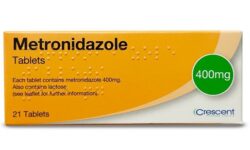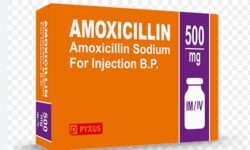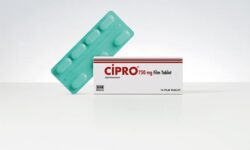Benefits of Electronic Health Record
In today’s technologically advanced world, the integration of digital systems and healthcare has revolutionized the way patient care is delivered. In this blog post, we will explore the various benefits that come with the implementation of digital technology in healthcare settings. From improved patient care and safety to enhanced efficiency and productivity, we will delve into how these advancements have streamlined communication and coordination among healthcare professionals. Furthermore, we will discuss how digital systems have facilitated data analysis and research, ultimately paving the way for better healthcare outcomes. Join us as we unravel the endless possibilities that digital technology brings to the healthcare industry.
Improved Patient Care And Safety
Electronic Health Records (EHRs) have revolutionized the healthcare industry by providing numerous benefits to both patients and healthcare providers. One of the primary advantages of utilizing EHRs is the enhanced patient care and safety it offers. EHRs streamline and organize patient information, ensuring easy access to critical medical data such as medical history, allergies, and medication records in real-time. This accessibility enables healthcare providers to make better-informed decisions and provide more personalized care to patients.
EHRs also facilitate quicker and more accurate diagnoses by allowing healthcare professionals to share patient information across different departments and healthcare facilities. This interoperability eliminates the need for patients to repeat medical procedures and tests, saving both time and money. Furthermore, EHRs enable healthcare providers to track and manage chronic conditions more effectively. With access to comprehensive patient data, physicians can monitor treatment plans, track progress, and make necessary adjustments promptly, enhancing the overall quality of care.
Another crucial aspect of EHRs is improving patient safety by minimizing medication errors and allergic reactions. Through integrated software, EHRs can cross-reference a patient’s medical records, including current medications and allergies, to prevent potential adverse drug interactions. This functionality significantly reduces the risk of prescribing medication combinations that could harm patients. Additionally, EHRs can issue alerts and reminders to healthcare providers regarding potential drug allergies or dosing errors, ensuring a higher level of patient safety.
| Benefits of Electronic Health Records |
|---|
|
In conclusion, the implementation of Electronic Health Records undeniably contributes to improved patient care and safety within the healthcare system. The use of EHRs enables healthcare professionals to have instant access to vital patient data, resulting in better-informed decisions, faster diagnoses, and enhanced chronic disease management. Moreover, EHRs reduce medication errors and allergic reactions, safeguarding patients’ well-being. As technology continues to advance, the benefits of EHRs will undoubtedly play an increasingly vital role in optimizing patient care and safety.
Enhanced Efficiency And Productivity
Electronic Health Records (EHRs) have revolutionized the healthcare industry in many ways. One of the significant benefits of EHRs is the enhanced efficiency and productivity it brings to healthcare providers and organizations. Gone are the days of paper-based records and time-consuming manual processes. With EHRs, healthcare professionals can now access patient information instantly, leading to improved efficiency in delivering care and managing administrative tasks.
One of the key advantages of EHRs is the elimination of duplicate work. Medical staff no longer need to spend hours deciphering illegible handwritten notes or searching for lost patient files. Instead, they can easily retrieve comprehensive patient records electronically, including medical histories, diagnoses, medications, and lab results. This saves valuable time and allows healthcare providers to focus more on patient care.
The use of EHRs also facilitates streamlined workflows and reduces administrative burden. By automating tasks such as appointment scheduling, billing, and coding, healthcare organizations can enhance their operational efficiency and productivity. This enables healthcare professionals to spend more time with patients and provide better quality care.
- Improved Patient Care and Safety: EHRs improve patient care by providing access to up-to-date and accurate patient information. This enables healthcare providers to make informed decisions and provide appropriate treatments.
- Enhanced Efficiency and Productivity: EHRs eliminate duplicate work, improve workflows, and automate administrative tasks, leading to increased efficiency and productivity for healthcare organizations.
- Streamlined Communication and Coordination: EHRs enable seamless communication and coordination among healthcare professionals, ensuring effective collaboration and better patient outcomes.
- Facilitated Data Analysis and Research: EHRs provide a wealth of data that can be analyzed for research purposes, leading to advancements in medical knowledge and improved healthcare practices.
| Benefits | Enhanced Efficiency And Productivity |
|---|---|
| Improved patient care | ✔ |
| Time-saving | ✔ |
| Streamlined workflows | ✔ |
| Automated administrative tasks | ✔ |
Streamlined Communication And Coordination
Streamlined Communication and Coordination
Effective communication and coordination play a vital role in the healthcare industry. The ability to seamlessly exchange information among healthcare providers is crucial for delivering high-quality care. One significant advancement in this area is the implementation of Electronic Health Records (EHRs). EHRs have revolutionized the way healthcare professionals communicate and coordinate patient care, leading to improved outcomes and a more efficient healthcare system.
Benefits of Streamlined Communication and Coordination:
1. Enhanced Collaboration: With EHRs, healthcare providers can communicate and collaborate in real-time. Information about a patient’s medical history, medications, and test results can be accessed instantly, eliminating the need for time-consuming phone calls or fax exchanges. This streamlined communication allows healthcare professionals to make well-informed decisions quickly, leading to improved patient outcomes.
2. Reduced Errors: Miscommunication or lack of coordination can result in medical errors, which can have severe consequences for patients. EHRs enable accurate and complete sharing of information, reducing the risk of errors due to lost or misunderstood data. The use of standardized medical terminology and clear documentation of patient instructions also contributes to better coordination of care.
3. Improved Continuity of Care: In a complex healthcare system, patients often see multiple providers across different specialties. EHRs facilitate better coordination by ensuring that all healthcare professionals involved in a patient’s care have access to the same up-to-date information. This seamless transfer of patient data ensures continuity of care, minimizes duplication of tests and procedures, and reduces the risk of adverse events.
Utilizing EHRs for Streamlined Communication and Coordination:
Implementing EHRs requires careful planning and training to maximize their effectiveness. Healthcare organizations need to ensure that their systems are interoperable, allowing for smooth information exchange between different providers and settings. Policies and protocols should be established to guide the appropriate use and sharing of patient data while maintaining strict security and privacy standards.
Furthermore, healthcare professionals must be trained on the proper use of EHRs, including inputting data accurately, accessing and interpreting shared information, and effectively communicating with other providers through the system. Ongoing education and support should be provided to ensure that healthcare professionals are proficient in utilizing EHRs for streamlined communication and coordination.
In conclusion, the adoption of Electronic Health Records has significantly streamlined communication and coordination in the healthcare industry. The benefits are clear, with enhanced collaboration, reduced errors, and improved continuity of care being key outcomes. By maximizing the potential of EHRs and providing the necessary training and support, healthcare organizations can continue to improve communication and coordination, ultimately leading to better patient outcomes.
Facilitated Data Analysis And Research
In today’s digital age, the use of technology in the healthcare industry has become increasingly prevalent. One such technological advancement that has revolutionized the field is the implementation of Electronic Health Records (EHRs). EHRs have significantly facilitated data analysis and research, leading to a multitude of benefits both for healthcare professionals and patients.
EHRs have revolutionized the way healthcare data is stored and accessed. In the past, paper-based medical records posed significant challenges in terms of storage, organization, and retrieval. However, with the advent of EHRs, healthcare providers can now efficiently manage and analyze vast amounts of patient data with a few clicks. The ability to quickly access and retrieve patient information not only enhances the efficiency of healthcare facilities but also enables seamless data analysis and research.
Moreover, EHRs play a crucial role in facilitating data analysis by allowing healthcare professionals to extract valuable insights from patient records. The structured format of EHRs enables easy identification of trends and patterns, which can be instrumental in conducting research studies. By utilizing the data stored in EHRs, researchers can analyze population health, identify risk factors, evaluate treatment efficacy, and explore possible correlations. This not only helps in advancing medical knowledge but also contributes to evidence-based practice, ultimately leading to improved patient outcomes.
- Improved Efficiency: EHRs streamline the process of data analysis and research, allowing healthcare professionals to spend less time on manual tasks such as searching for paper records and more time on interpreting and utilizing the data.
- Enhanced Accuracy: With EHRs, the chances of errors and inconsistencies in data analysis are significantly reduced. The standardized and structured format of EHRs ensures the accuracy and reliability of the data, leading to more valid research findings.
- Collaborative Research: EHRs enable seamless sharing of patient data among healthcare providers, researchers, and institutions. This promotes collaboration and data exchange, fostering multi-center studies and research initiatives that can have a broader impact on the healthcare community.
Furthermore, EHRs have the potential to improve patient care through data analysis and research. By analyzing a large volume of patient data, healthcare professionals can identify best practices, formulate guidelines, and optimize treatment plans. This not only ensures standardized care but also helps tailor treatment approaches based on individual patient characteristics, ultimately improving patient outcomes and safety.
In conclusion, the advent of Electronic Health Records has unquestionably facilitated data analysis and research in the healthcare industry. The benefits derived from EHRs in terms of improved efficiency, enhanced accuracy, and collaborative research are undeniable. Moreover, the utilization of EHRs for data analysis and research has a significant impact on patient care and safety, as it allows healthcare professionals to continuously improve their practices based on evidence-based findings. Embracing and harnessing the power of EHRs in research endeavors is essential for the advancement of healthcare and the wellbeing of patients.
Frequently Asked Questions
What is the impact of improved patient care and safety in healthcare?
Improved patient care and safety in healthcare lead to better outcomes for patients, reduced medical errors, and enhanced patient satisfaction. It ensures that patients receive the highest quality of care while minimizing risks and potential harm.
How does enhanced efficiency and productivity benefit the healthcare industry?
Enhanced efficiency and productivity in the healthcare industry result in faster and more streamlined processes, reduced waiting times, and improved resource utilization. This allows healthcare providers to see more patients and deliver care in a timely and effective manner.
Why is streamlined communication and coordination crucial in healthcare?
Streamlined communication and coordination in healthcare are vital for seamless and effective collaboration among healthcare teams. It helps prevent miscommunication, ensures timely sharing of patient information, and promotes efficient decision-making, leading to improved patient outcomes.
How does facilitated data analysis and research contribute to healthcare?
Facilitated data analysis and research in healthcare enable organizations to identify trends, patterns, and insights from large volumes of patient data. This promotes evidence-based decision-making, allows for the development of personalized treatment plans, and supports ongoing medical research and advancements.
How can healthcare systems improve patient care and safety?
Healthcare systems can enhance patient care and safety by implementing patient-centric policies and protocols, utilizing technology solutions for medication management and patient monitoring, conducting regular staff training on safety best practices, and promoting a culture of continuous improvement and learning.
What technology solutions can improve efficiency in healthcare settings?
Technology solutions such as electronic health records (EHRs), telehealth platforms, appointment scheduling systems, and mobile healthcare apps can greatly improve efficiency in healthcare settings. These tools automate processes, enable remote communication and monitoring, and provide real-time access to patient information, reducing administrative burden and improving workflow.
How does effective communication among healthcare teams impact patient care?
Effective communication among healthcare teams ensures coordinated and collaborative care delivery. It helps prevent medical errors, facilitates proper medication management, reduces the risk of adverse events, and improves patient satisfaction. It also allows for the seamless transition of care between different healthcare providers.



